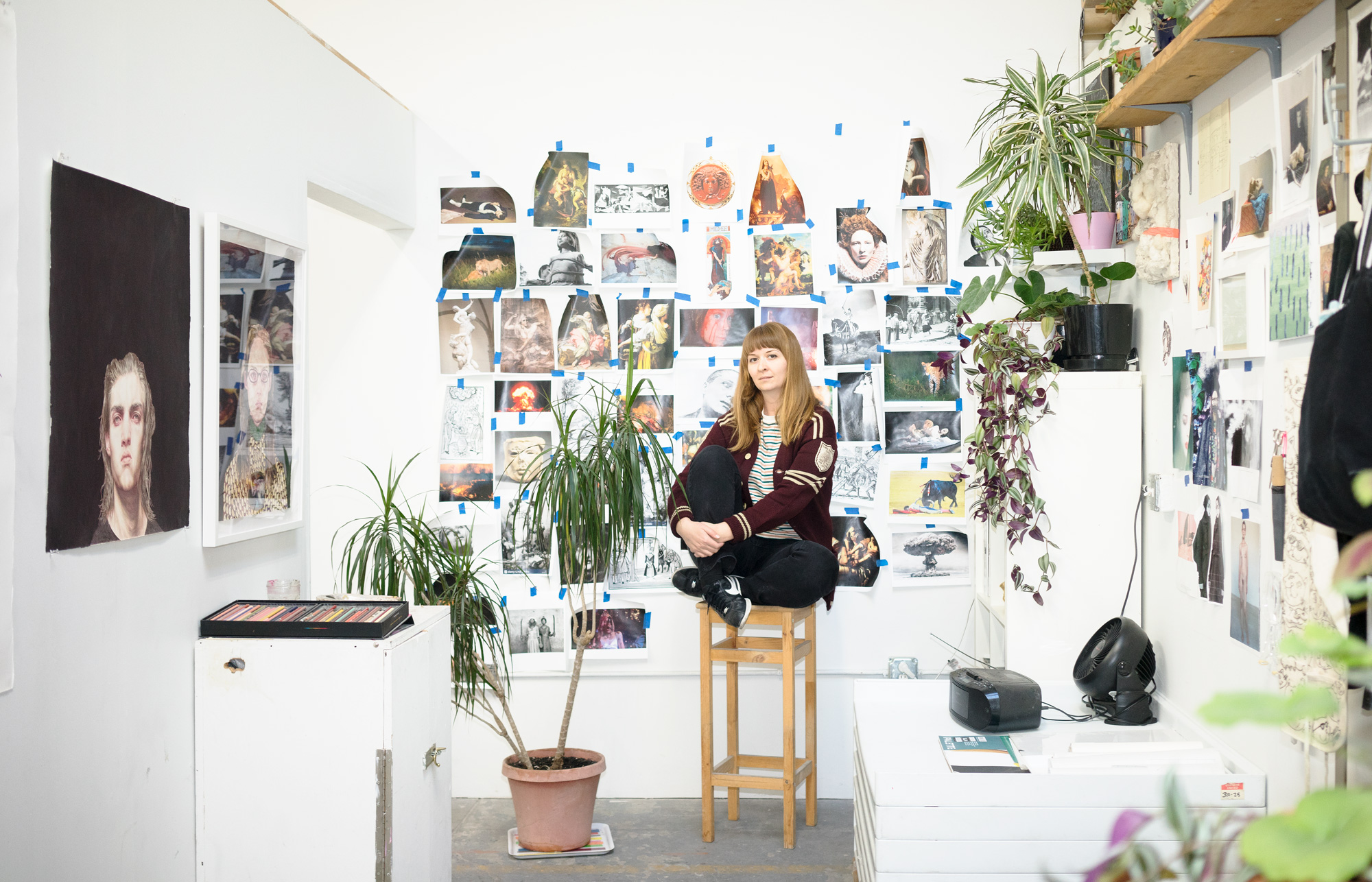
Serena Cole
An Alluring Analysis
Interview by Gabe Scott // Portrait by Graham Holoch
At a passing glance, it would be easy to characterize Serena Cole’s imagery as meticulously drafted portraits of lavish, imaginative beauty, but her characters are so much more. Their ornamentation mesmerizes. Behind the piercing eyes and provocative poses lie enticing clues that unlock her psychodynamic material. The subjects themselves may have roots in couture, but any hollow ostentation has been stripped and replaced by an ethereal depth.
This serves as the ultimate reflection of the truth Cole affirms: a middle finger to the social hypocrisy of human appraisal. Her process, combined with a unique ability to psychoanalyze, emboldens her work with a mythic power; a power to exist within her own paintings and other individuals partaking. Her imagery goes beyond self-reflection as a mirror where she views herself from different perspectives within both art history and contemporary gender politics.
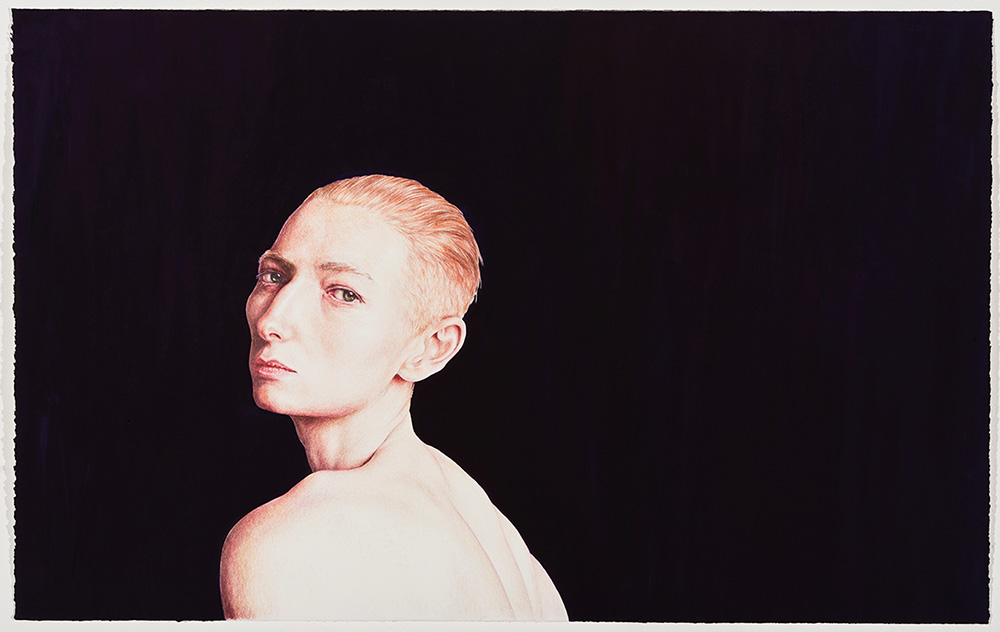
Gabe Scott: Looking back on your childhood, what fascinated you about being able to change identity? Have any of the things specifically grown up with you and driven your imagination as an adult
Serena Cole: I had a lame childhood where I was forced to live off the grid in the Sierra Nevadas in Northern California, without any neighbors. I spent all my time in my room drawing or watching movies. Transformation was so much a part of what I watched as a child. She-Ra becomes a warrior princess, Alice in Wonderland morphs over and over, and, of course, there's Halloween, which I loved. I drew and thought about becoming someone else because I was so isolated and needed to think about other possible lives. Now that I'm an adult, I still constantly think about being someone else; I mean, that's what advertising is getting us to do, right? “Get this couch and you can be more like the person you imagine having this couch.” I don't actually want to literally be someone else, but it's something we do without realizing it, trying on different selves, mentally, that is. We do it through social media, acting differently around certain people, etc.
For some time, you’ve worked with found source material from fashion advertising. Is this the primary source for your figurative subject matter?
Yes, and I still do that. For me, it’s a way of narrowing my options, otherwise, the world just seems way too big. I look for stuff that appeals to me intuitively or emotionally and then go from there. In grad school, I started researching psychoanalysis and looking at all this dark, subconscious stuff. What I thought was really interesting was that it could exist in a fashion magazine. For instance, something on fire in this crazy, dystopian world was being used to sell you pants. It said a lot about what people who look at that stuff are secretly into, even on a subconscious level. So my work got a little more pointed by using advertising as a mirror for portions of society. I am also consciously thinking more about relationships to art history and politics.
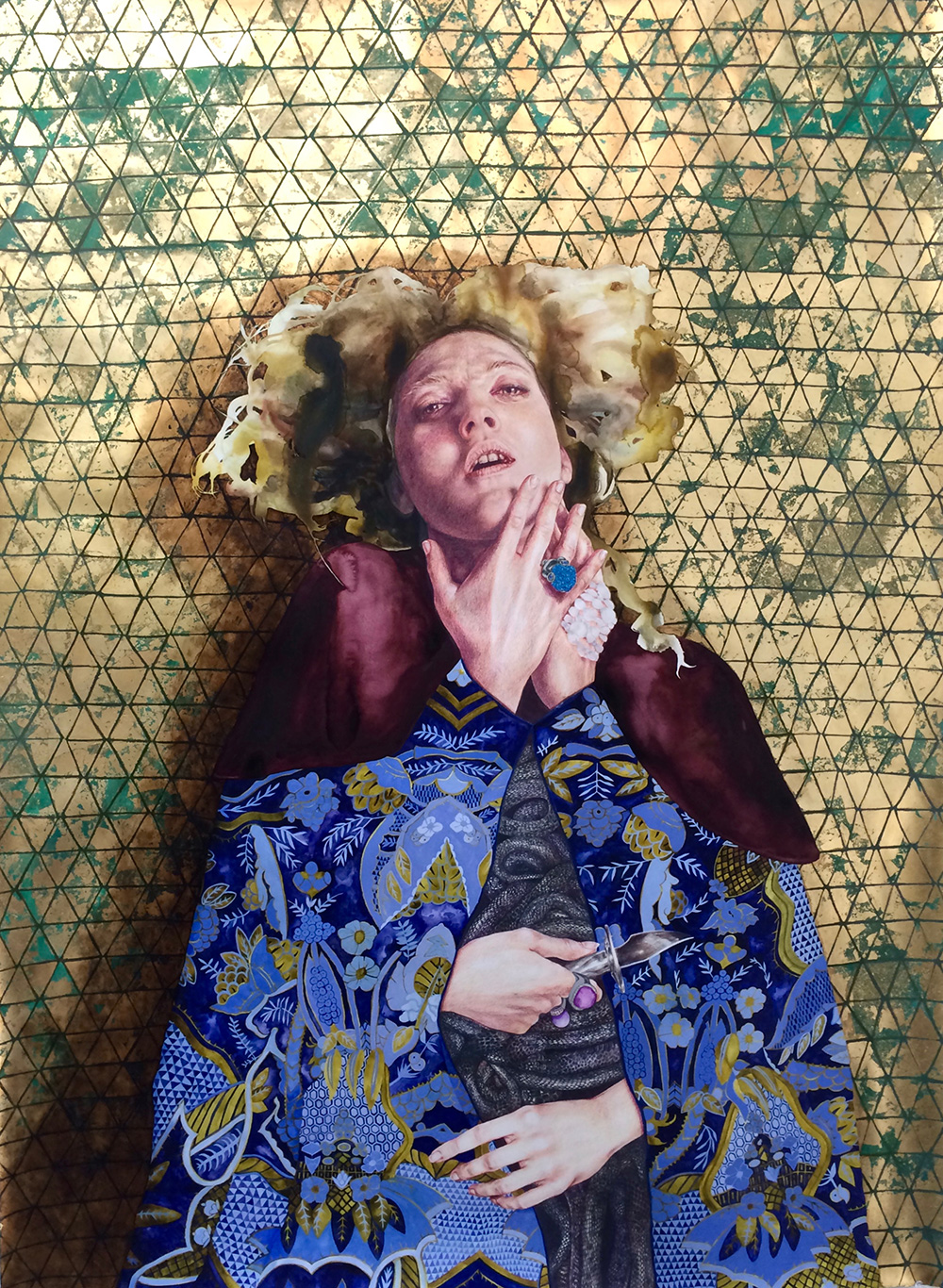
Many of those expressions involve a degree of irony, like those featuring the dystopian landscapes populated by emaciated, feral-looking individuals apparently tortured before being left on the side of the road. Except that they are dressed in a $10K wardrobe for the apocalypse…
Yeah, it’s still really visually appealing, and the dystopia itself is fucking fascinating. I don’t want to paint happy pictures. I’m way more into delving into the darkness that is in me. But when I also find that darkness in other places, I find it super inspiring and connect to it like a power source.
Can you expand on your fascination with dystopian conditions?
I think the concept of a dystopia is so interesting, and also, contrary to most narratives, humans have dreamed it up over time. Of course, it makes sense to develop utopian narratives as it's a form of self-preservation. But where does a dystopia fit in? What makes us also fantasize about our demise? That is so fucking weird! Psychology posits there is something known as a “death drive”; essentially a subconscious desire to end things. I think it is a psychological landscape that reveals a lot more about what humans are really about, what life is really like, and what we fear. We're so not perfect. I guess, in a way, I make art about that.
I want to know more about the “darkness.” Can you speak more specifically about what you embrace, what is frightening, and what compels you to explore deeper within your own psyche? Do you think of it as a fact-finding mission?
When I think of darkness, I'm thinking about feelings people generally hide or repress: anger, sadness, disillusionment. It’s like Nick Cave's manic stage presence versus someone like Tom Jones, you know? It is a more genuine feeling instead of just pretending everything is so blissful, and experiencing that through someone's music is comforting. For me, painting a portrait lets me explore the emotions I have but usually keep a little below the surface. Changing the expressions lets me channel those things through them, and they reveal themselves over time, as they are drawn. So, in that way, they are vehicles for revealing my own subconscious to myself and letting that darkness exist on someone else's face.
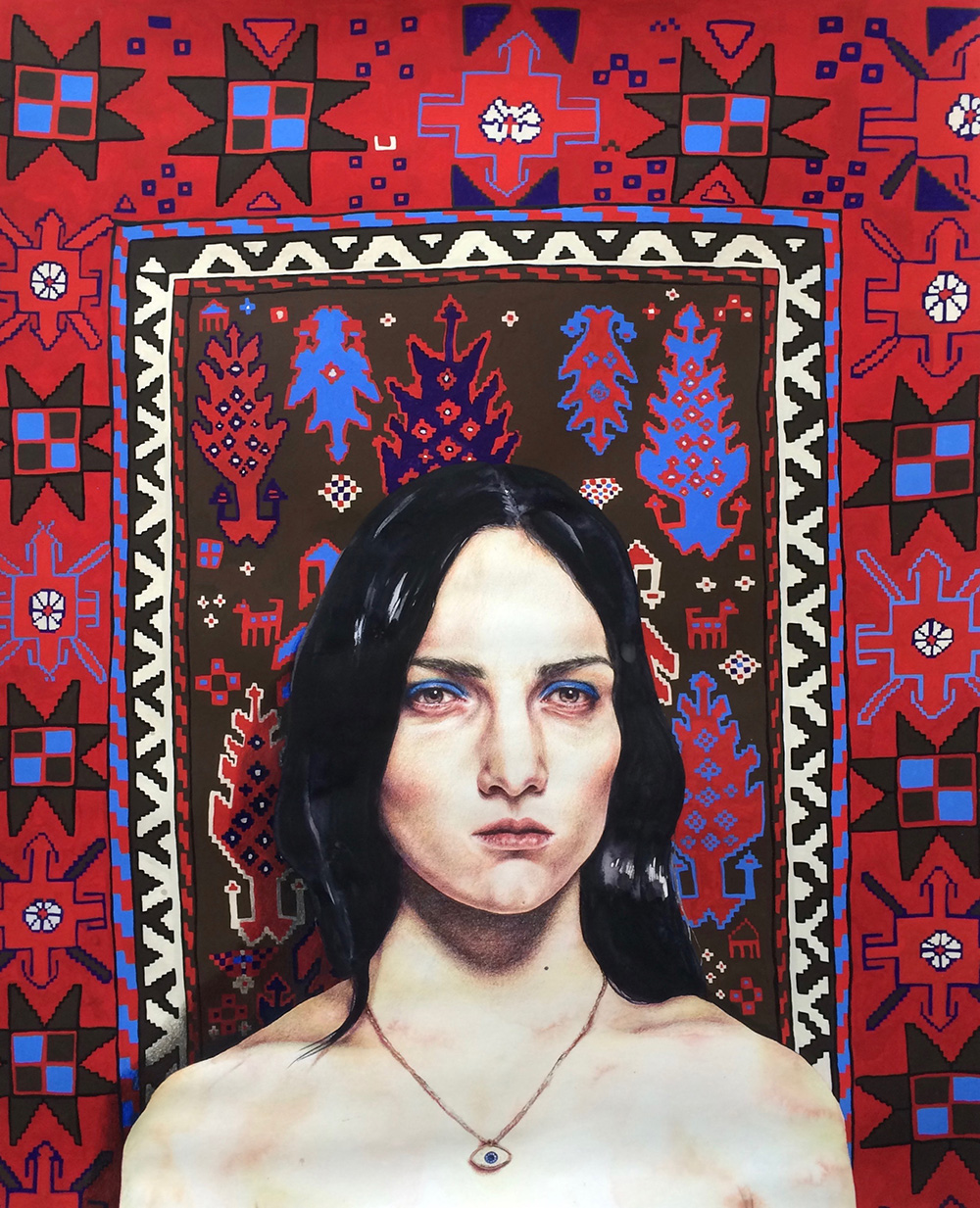
Do your portraits reflect different perceived perspectives of yourself?
I think so, because I feel like I can own them and communicate through them in a way that I don’t feel when I draw a dude. I don’t think the dudes are really me, and I can’t fully imagine it, but in some way, they are a mirror, because sometimes I want to be a dude.
Just to take it for a spin?
I think we all wonder, at times, what it would be like to live as the other gender. There is such a different power dynamic to becoming a man.
When did you start exploring the possibilities of male subject matter, such as the two Better Than Real paintings?
I paint dudes every once in a while, but my options are limited because I’m not interested in many of the different male variations that are presented in the magazines I source. I have to find a dude that I can identify with, and there are very few that I see and think, “If I was going to be a dude, I’d be that guy.” I had to change the Better Than Real guys by adding the flowers in order to take the masculine edge off enough for them to be interesting to me.
What about working with live models or painting people within your circle?
I’m just not interested in “real” stuff. I like the power of finding something that already exists. The photo exists but the person in the picture doesn’t really exist in the context in which they are presented. It’s an image that has gone through photoshop, make-up and direction to create a fictional identity, which I often juxtapose with other images to create new narratives. The only time I’ve ever wanted to use my own photos were those of the high school students I teach. There’s something about being one, and I really identify with the angst and the horrible, awkward beauty of being a teenager. I want to go there; I just haven’t made any of those drawings yet.
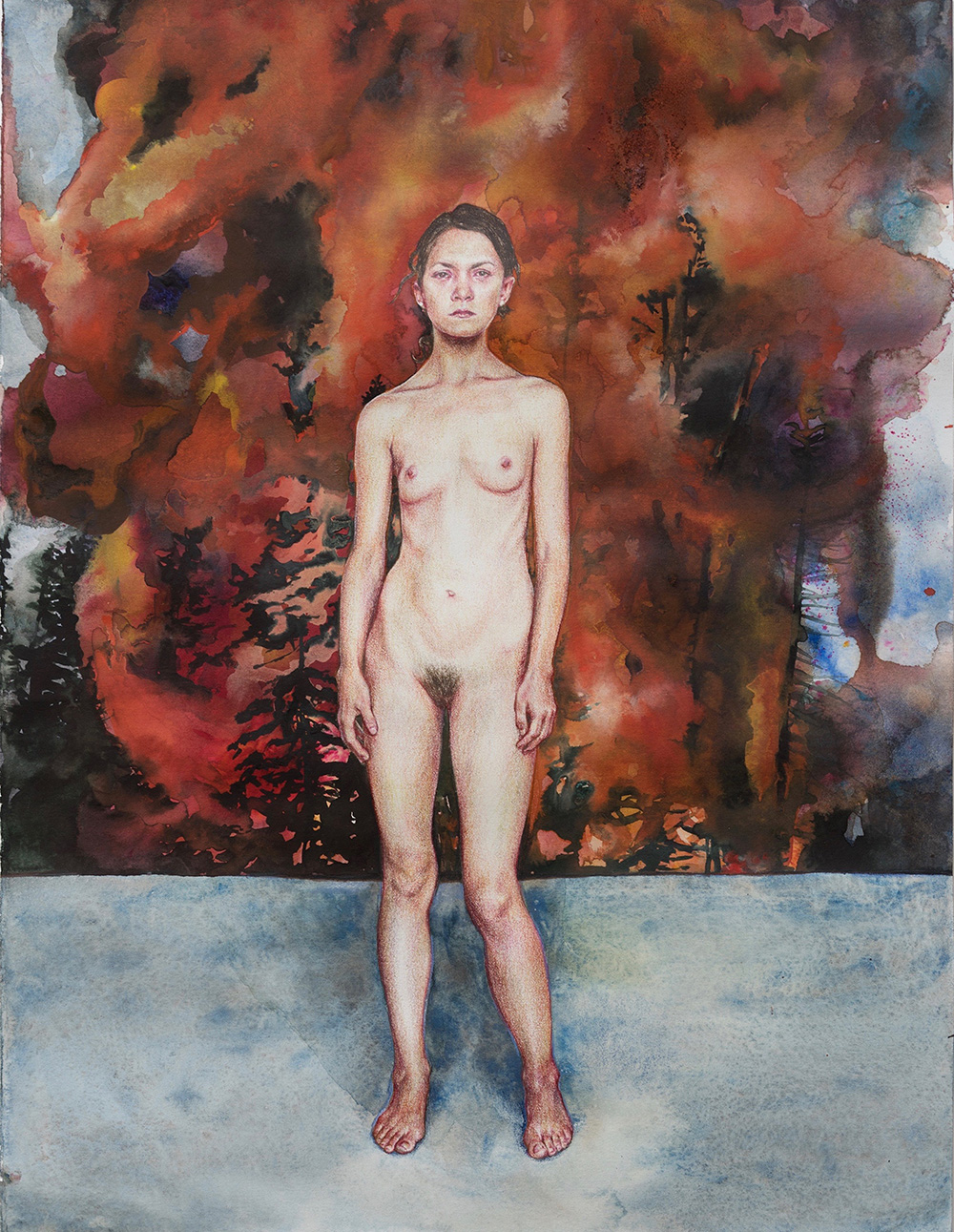
Have you ever heard the term baroco, an Italian word for an irregularly shaped pearl? I feel a connection to that term when looking at many of the people you depict and the way you shape them
Well, I love the Mannerists and that is kind of the same thing, where they’re distorted a bit, but still really beautiful. I think decay or distortion is about knowing there is never a perfect thing. Even if you were to look like that beautiful person, it would still not be enough; there’s never any kind of final satisfaction, so I kind of like to show them unsatisfied or a little deformed.
Is there a period of painting or portraiture that you are particularly fond of or that has been influential?
I look at the whole history of portraiture, especially Mannerism, but also the Flemish and early Renaissance painting. I really love Ingres and that Neo-Classical stuff, too. I go to that stuff a lot, way more than I look at contemporary work. I feel like I’m having a conversation with them, sort of just continuing down the path. Even though I could never be that good of a painter, I do feel a sense of satisfaction in continuing the tradition of painting portraits.
You have a unique ability to beautify and sensationalize the various components within the picture plane. I also love the way you combine your own decorative elements with aspects of mysticism and even psychoanalysis. Don’t Even Fucking Try It is particularly interesting, as well as other recent works, for their focus and detail in the clothing or other ephemera.
I’m really excited about layering spaces together. My whole studio is currently pictures of shit that I never used to look at before. I’ve opened the gaze past the fashion magazines and have stuff burning down, lions eating other animals, dead bullfighters and other stuff I’ve Googled, like all this art history stuff. Even though Don’t Even Fucking Try It is from fashion magazines, I don’t want it to look like fashion. I’m trying to have more than one person and more than one space exist together, so they can have a conversation about how I currently feel.
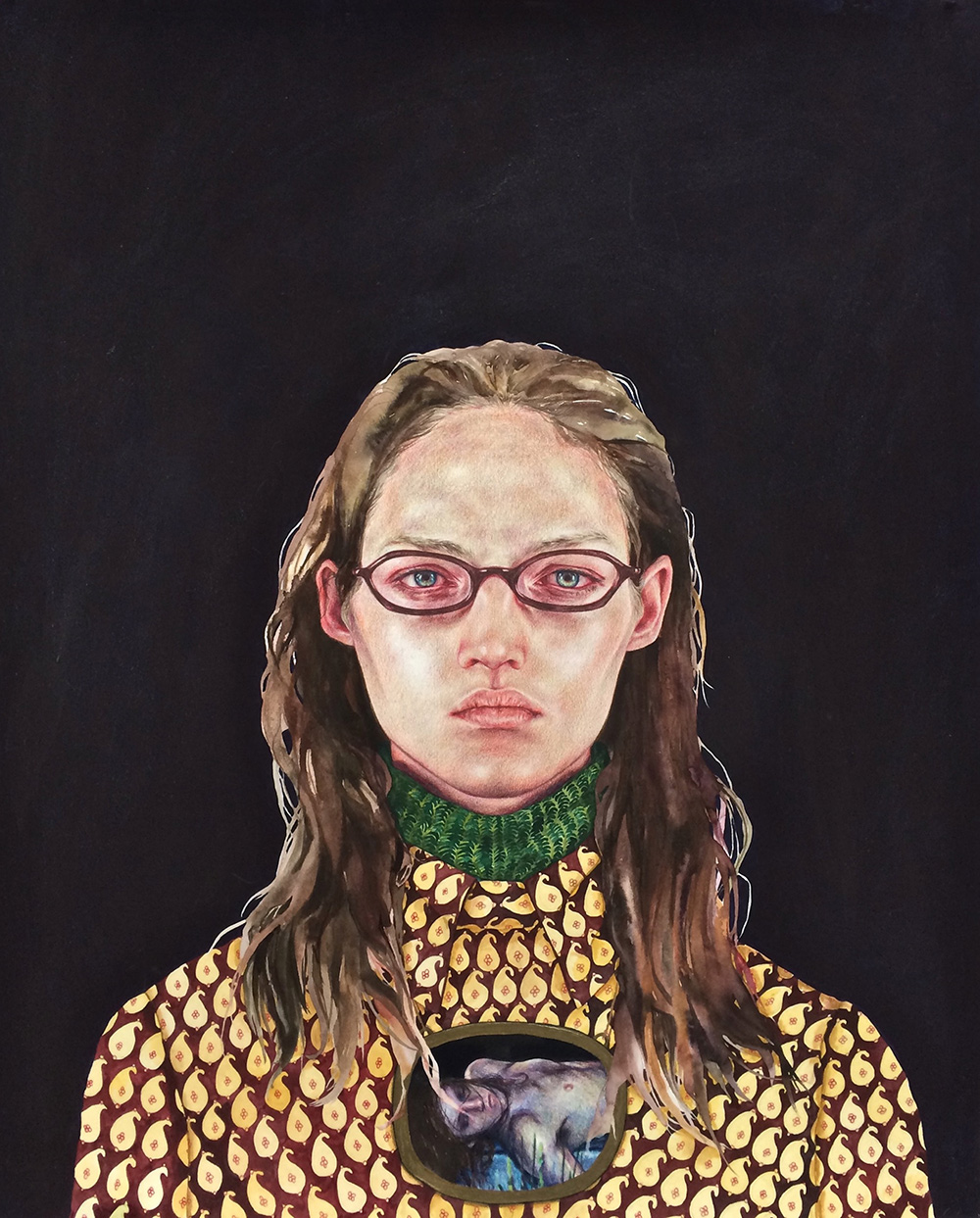
The way that particular piece is constructed strips away the fashion-forward aspects of some of your earlier work. You share a physical harmony with the subject, as opposed to a found couture.
My style has changed a little bit too. I see the detail and describe it better, though I think that people prefer my older stuff, which is a little more flowery, while this work is getting more descriptive. I think the newer work is more explicit by being more detailed and slightly more realistic, but with the detail comes more specific expression. I think the people I am drawing are more individualized than the older work, their faces a combination of my interpretation of the photos and what I want them to look like. I wasn't technically able to get to such a unique face in my older work. Also, my subject matter has become more pointed and I understand the content better. Rather than make a portrait of a person, I am more conscious and specific about the gaze; both their gaze toward you and referencing you gazing at them. I want them to acknowledge being seen, and to reference their discomfort with being seen.
I was intrigued by the show you recently curated, TAKEOVER. Reacting to the current socio-political upheavals is a common practice, but you’ve included the issue of major art institutions, galleries and critics actively discriminating against female and gender non-conforming artists. How did that aspect of your focus come about?
It wasn’t one specific thing that happened to me, but I started to become really aware of the fact that every aspect of what I’m doing definitely leans towards the female side— my materials, my subject matter, the emotion and intuition—really, all of the things I’m interested in are shoved on to one side of the fence, and it’s not that well-received. It’s not obvious discrimination, but there is definitely a tendency by the art world to favor male artists. I’ve really come to notice that the artwork gaining recognition is not all made by men, but definitely speaks in a more male language. Everything is really cold and logical. By default, my more emotional, personal, work feels “too girly” for the art world. I was having a really difficult time communicating my ideas with certain people and I started to feel, just, really uncool. Then I would see these landmark shows, and I’m not an expert on all the art that ever happened, but there were suddenly all these much older women whom I’d never heard of who were finally having big solo shows. Had they sort of proven something by being around a super long time that, eventually, curators took them seriously? What does a woman have to do to show she is worthy of the same recognition as her contemporary male artists? And how do we open the lens of appreciation to factor in other kinds of work that are not currently as validated?
Long story short, I noticed a definite connection between a woman having to really prove her legitimacy in the art world and the legitimacy of a woman running for president with all that happened before the election. I started my zine and show out of sheer frustration at the obvious misogyny all around us. I asked my female and non-binary friends to contribute their work and thoughts to the zine because I knew they were bound to feel the same way I did. I also wanted to celebrate the talent all around me that often goes under-recognized. It was the one thing I could do to “rattle the cages.” I try to celebrate my own community and create the shows that I would like to see.
serenacole.org





